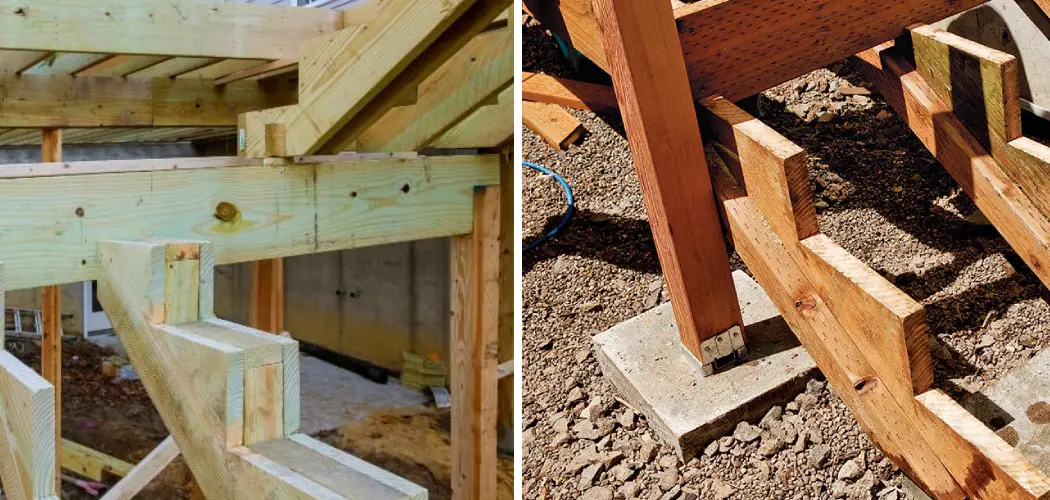Installing stair stringers on a deck is a crucial step in creating a safe and functional staircase that provides easy access to your outdoor space. Whether you’re building a new deck or replacing an existing staircase, properly installing stair stringers is essential for ensuring structural stability and user safety. Stair stringers are the angled supports that hold the steps in place, connecting the deck surface to the ground.
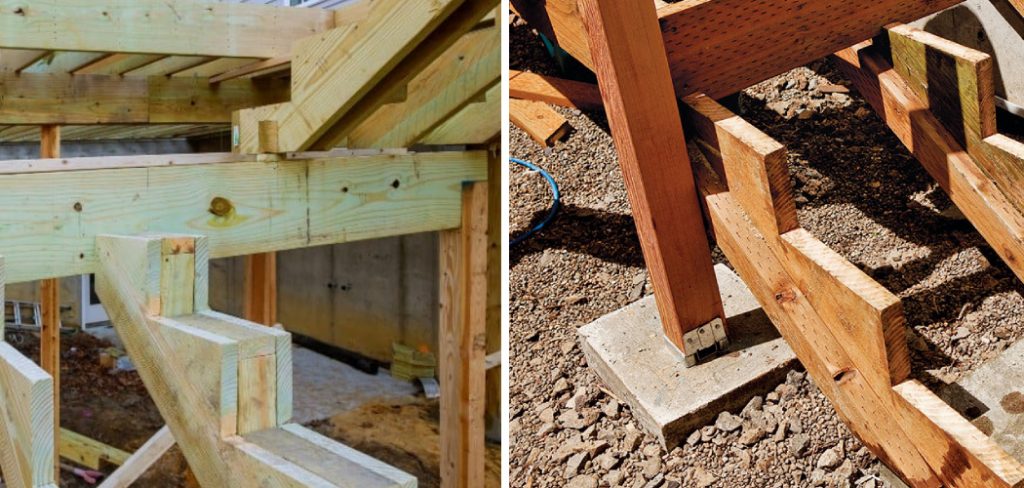
In this article, we will guide you through the process of how to install stair stringers on a deck, covering important considerations such as measurements, calculations, cutting, and securing the stringers. By following these guidelines, you can confidently create a sturdy and well-designed staircase that seamlessly integrates with your deck, enhancing both its aesthetics and functionality.
Importance of Properly Installed Stair Stringers for Deck Safety
When building a deck, safety should be your top priority. Installing stair stringers is an essential part of the process, as they provide structural support for the stairs leading up to it. When done correctly, installing stair stringers will ensure that your deck has stable, safe stairs.
Improperly installed or damaged stair stringers can cause weak spots on the stairs and lead to dangerous conditions such as trips and falls. Taking the time to install stair stringers correctly will pay off in terms of providing strong support for your deck’s staircase while protecting it from accidents.
When installing stair stringers, make sure to use materials that are rated for outdoor use so that they do not deteriorate over time due to exposure to the elements. The stringers should be securely fastened to the deck and properly leveled so that they are even with the rest of the stairs.
Additionally, it is important to make sure that the stair stringer layout is consistent across all steps; this will ensure a uniform appearance as well as stability for each step’s footing. Finally, always install supporting posts or railings when installing stair stringers in order to provide extra support and help reduce any risk of falls or other accidents.
By taking these safety precautions and ensuring that your staircase is safely constructed from top to bottom, you can have peace of mind knowing that your stairs are secure and stable for anyone who uses them. With a little bit of extra care and attention when installing stair stringers for your deck, you can guarantee the safety of everyone who steps onto it.
Benefits of a Secure and Well-Constructed Stair System
A secure and well-constructed stair system for a deck provides many benefits, such as:
1. Increased Safety
Stair stringers that are properly installed will create a safe passage up to the next level of your deck. Taking the time to ensure they’re securely fastened and have enough support will reduce the risk of slips and falls when traversing your stairs.
2. Enhanced Aesthetics
Stringers that are correctly attached to the deck can also greatly enhance its look. It adds an appealing border between steps, creating a classic look while simultaneously providing extra support for those walking on it.
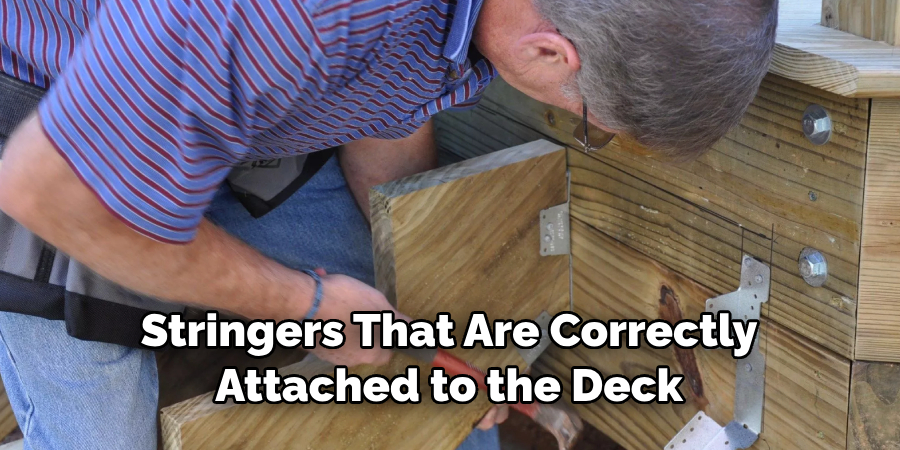
3. Durability
When you take care to install stair stringers correctly, you’re also ensuring they’ll last for many years. If installed properly, stairs will remain sturdy and secure even when exposed to harsh weather conditions or heavy foot traffic.
By taking the time to install stair stringers correctly on a deck, you can reap the benefits of increased safety, enhanced aesthetics and long-lasting durability. An investment in your outdoor space is an invaluable one that will return dividends year after year.
10 Ways How to Install Stair Stringers on a Deck
Step 1: Determine the Stair Design
Begin by determining the stair design that best suits your deck and meets local building codes. Consider factors such as the desired number of steps, the overall height of the staircase, and the available space for the stairs. Ensure compliance with regulations regarding tread width, riser height, and handrail requirements.
Step 2: Gather the Necessary Tools and Materials
Collect all the necessary tools and materials for the stair stringer installation. These may include a measuring tape, framing square, circular saw, drill, fasteners (screws or nails), level, and safety equipment such as goggles and gloves. Use pressure-treated or weather-resistant lumber for durability.
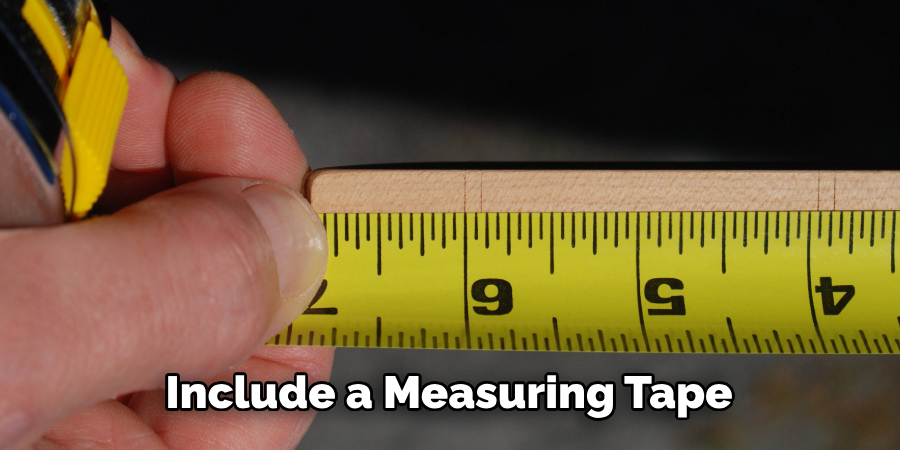
Step 3: Measure the Total Rise and Run
Measure the total rise, which is the vertical distance from the deck surface to the ground, and the total run, which is the horizontal distance covered by the stairs. Use a measuring tape and ensure accurate measurements for precise stringer calculations.
Step 4: Calculate the Number of Stringers
Use the total rise and run measurements to calculate the number of stair stringers needed. Divide the total rise by the desired height of each riser, taking into account the local building code requirements. Adjust the number of stringers based on the recommended spacing, typically between 16 and 24 inches apart.
Step 5: Determine the Stringer Layout
Based on the number of stringers calculated, determine the layout of the stair stringers. Decide whether to have open or closed stringers and whether to use a center stringer or multiple stringers evenly spaced.
Consider aesthetics, structural stability, and the recommended guidelines for stringer placement. Once the layout is determined, mark the location of each stringer on the deck frame. However, it is recommended to leave 1/2 inch between the stringers for expansion.
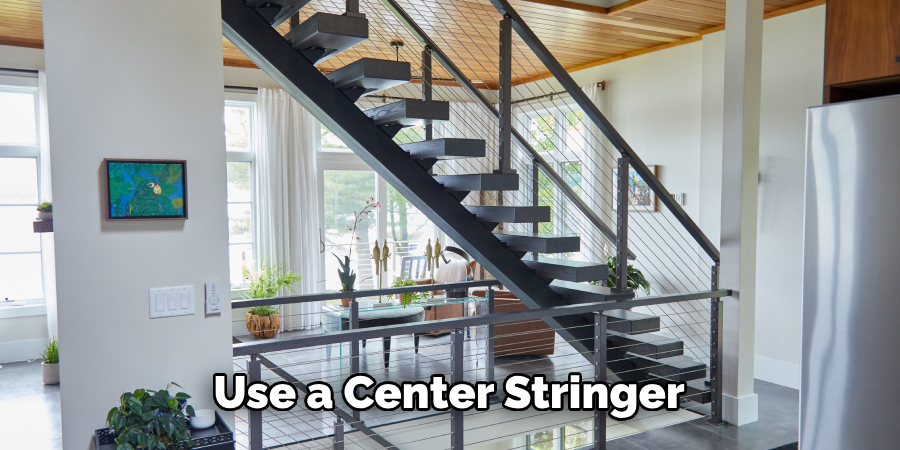
Step 6: Mark and Cut the Stringers
Using a framing square, mark the rise and run measurements on the stringer boards. Ensure the cuts are precise and straight. Use a circular saw to cut along the marked lines, following the correct angles and dimensions.
Double-check the accuracy of the cuts before proceeding. Although it may be tempting to use a jigsaw, the end-result won’t be as precise and neat. Once the stringer boards are cut, use sandpaper to smooth out the edges.
Step 7: Attach the Stringers to the Deck
Position the stringers against the deck, aligning them with the layout marks. Use a level to ensure they are plumb and adjust as necessary. Secure the stringers to the deck using screws or nails, ensuring a strong and secure connection. Use appropriate fasteners and spacing as recommended by building codes. Take care to avoid splitting or damaging the stringers and make sure to drive fasteners into the deck framing.
Step 8: Install Risers and Treads
Install risers, which are the vertical boards that connect the stringers, providing support for the treads. Attach the risers to the back of each step, ensuring a flush and secure fit. Install the treads, which are the horizontal boards that form the steps, ensuring they are level and properly spaced.
Step 9: Add Supporting Brackets or Cleats
For added support and stability, consider installing supporting brackets or cleats between the stringers. These can be attached to the underside of the treads or risers to reinforce the connections and prevent sagging or movement. There are a variety of brackets and cleats available for purchase, so be sure to select the best option for your specific needs.
Step 10: Inspect and Test the Staircase
Conduct a thorough inspection of the installed stair stringers, risers, and treads. Ensure all connections are secure and stable. Test the staircase for proper weight distribution and stability by walking up and down the steps. Make any necessary adjustments or reinforcements to ensure the staircase is safe and functional.
Measuring and Planning the Stair Layout
The first step in installing stair stringers on a deck is to measure and plan the staircase layout. It is important to remember that the rise of each step should not exceed 7 3/4 inches. You will also need to know the total run, which is the horizontal distance from one side of the stairs to the other, as well as the width of each step. Measure out and mark your measurements onto the decking with chalk for accuracy.
Once you have determined where you want your steps to be located, you can begin preparing by cutting away any obstructions and digging holes into which your footings will be placed. Be sure to use brackets or posts at least every 4 feet along the stair stringer run for maximum stability. Use a level to ensure that each post or bracket is in the correct position before you secure them.
Now that your stair structure is planned out and ready, you can begin installing the stair stringers. Starting at either end of the staircase, nail or screw the stringers into position. Make sure that they are level and plumb and adjust as necessary if they are not. Next, measure out your step height from the top of one stringer to the next. This measurement should not exceed 7 3/4 inches as previously mentioned in order to meet safety requirements. Cut the tread boards to fit between each stringer and attach them with screws or nails, making sure that they are level before moving on to the next step.
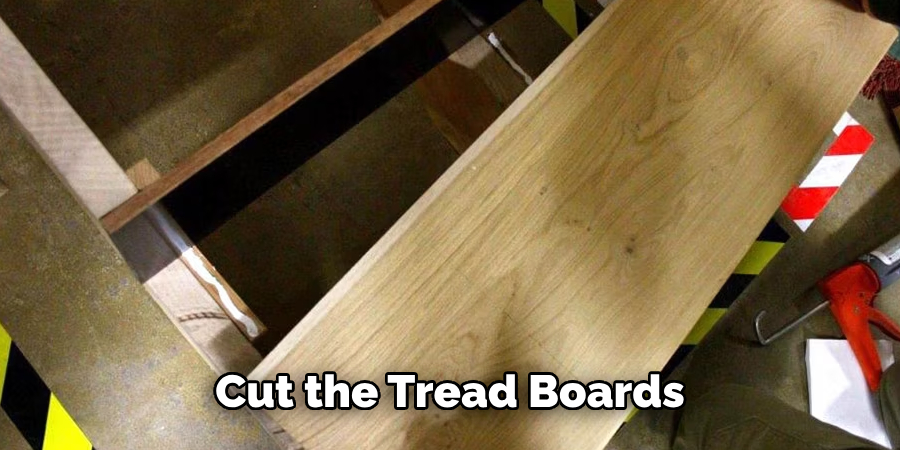
Conclusion
Installing stair stringers on your deck is a great way to improve the overall look of your outdoor space. By taking the time to properly measure and assemble the pieces, you can create an attractive staircase that will last for years. Not only are they aesthetically pleasing, but stair stringers also provide a feature that increases safety when traversing a steep slope.
With all this in mind, why not take some time to install stair stringers on your deck today? Taking initiative is the best way to ensure success in any home improvement project – so what are you waiting for? Check out our guide: How to Install Stair Stringers on a Deck for detailed step-by-step instructions and start working towards achieving better stairs now!

